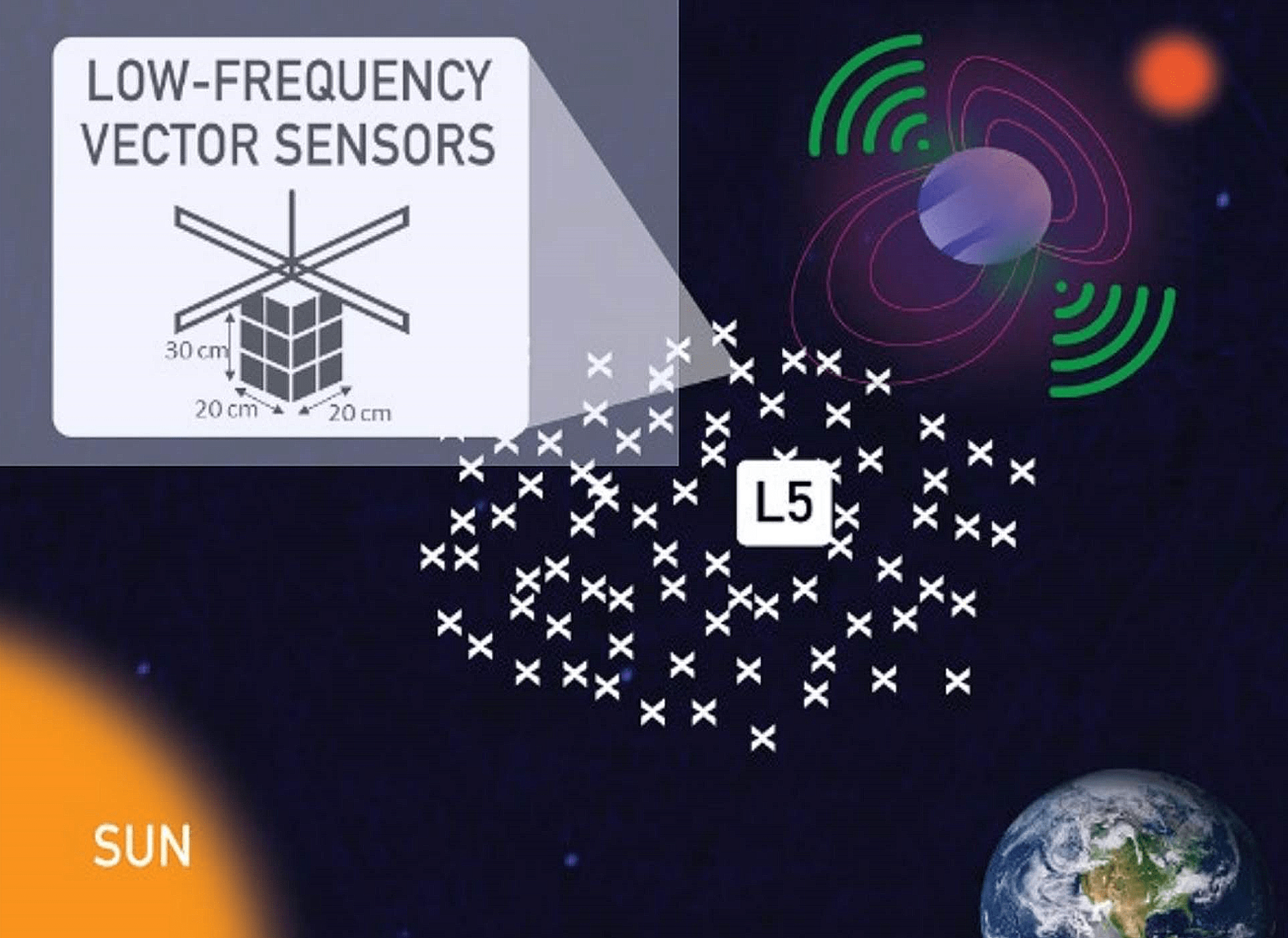Mary Knapp
MIT Haystack Observatory
Humankind has never before seen the low frequency radio sky. It’s hidden from ground-based telescopes by the Earths ionosphere and challenging to access from space with traditional missions because the long wavelengths involved (meter- to kilometer-scale) require infeasibly massive telescopes to see clearly. Electromagnetic radiation at these low frequencies carries crucial information about exoplanetary and stellar magnetic fields (a key ingredient to habitability), the interstellar/intergalactic medium, and the earliest stars and galaxies.
The Great Observatory for Long Wavelengths (GO-LoW) proposes an interferometric array of thousands of identical SmallSats at Earth-Sun Lagrange point (e.g. L5) to measure the magnetic fields of terrestrial exoplanets via detections of their radio emissions at frequencies between 100 kHz and 15 MHz. Each spacecraft will carry an innovative Vector Sensor Antenna (VSA), which will enable the first survey of exoplanetary magnetic fields within 5 parsecs.
In a departure from the traditional approach of a single, large, expensive spacecraft (i.e. HST, Chandra, JWST) with many single points of failure, we propose an interferometric Great Observatory comprised of thousands of small, cheap, and easily-replaceable nodes. Interferometry, a technique that combines signals from many spatially separated receivers to form a large virtual telescope, is ideally suited to long wavelength astronomy. The individual antenna/receiver systems are simple, no large structures are required, and the very large spacing between nodes provides high spatial resolution.
While deploying thousands of satellites to a Lagrange point may sound audacious today, there are several accelerating trends and technology developments that will make GO-LoW possible in the near-future. These include: the falling cost of mass-produced small spacecraft, the advent (and economics) of mega-constellations, and the return of large, high-capacity rockets like Starship and SLS.
Lower cost, higher availability of satellite subsystems: As manufacturing quantities increase, the cost of critical subsystems like propulsion, power, and communications is decreasing.
Lower launch costs: SpaceX and other new entrants to the launch vehicle market have pushed the market to lower and lower costs, through manufacturing innovations and the economics of scale behind mega-constellations. Starship will accelerate these trends.
Failure tolerance: Because of the scale of these constellations, a single spacecraft is no longer mission critical. Not only are failures tolerated, they are expected and built into calculations. This fail fast, fail cheap approach is a drastic departure from traditional practices.
In the proposed study, we will (1) determine the antenna design that optimizes per-element sensitivity between 100 kHz and 15 MHz and model the performance of GO-LoW for the exoplanet representative mission, (2) develop the constellation architecture for GO-LoW, including a trade study of interferometric correlation strategies and concept of operations, including constellation management and communications strategy, and (3) map out the technological development required to make GO-LoW feasible in the next 10-20 years.
The last great frontier in radio astronomy the low frequency end of the EM spectrum is on the verge of a revolution. The falling cost of SmallSats, the innovations behind LEO mega-constellations, and the return of large launch vehicles are all poised to come together to enable deep-space interferometric constellations to uncover the mysteries behind exoplanetary magnetic fields, the cosmic Dark Ages, and more. GO-LoW puts forth an ambitious vision the first Great Observatory Mega-Constellation – with thousands of satellites working together at L5 to survey all the exoplanets in our ‘local neighborhood’. Today’s technology and economic trends promise to make this vision feasible in the near future.































